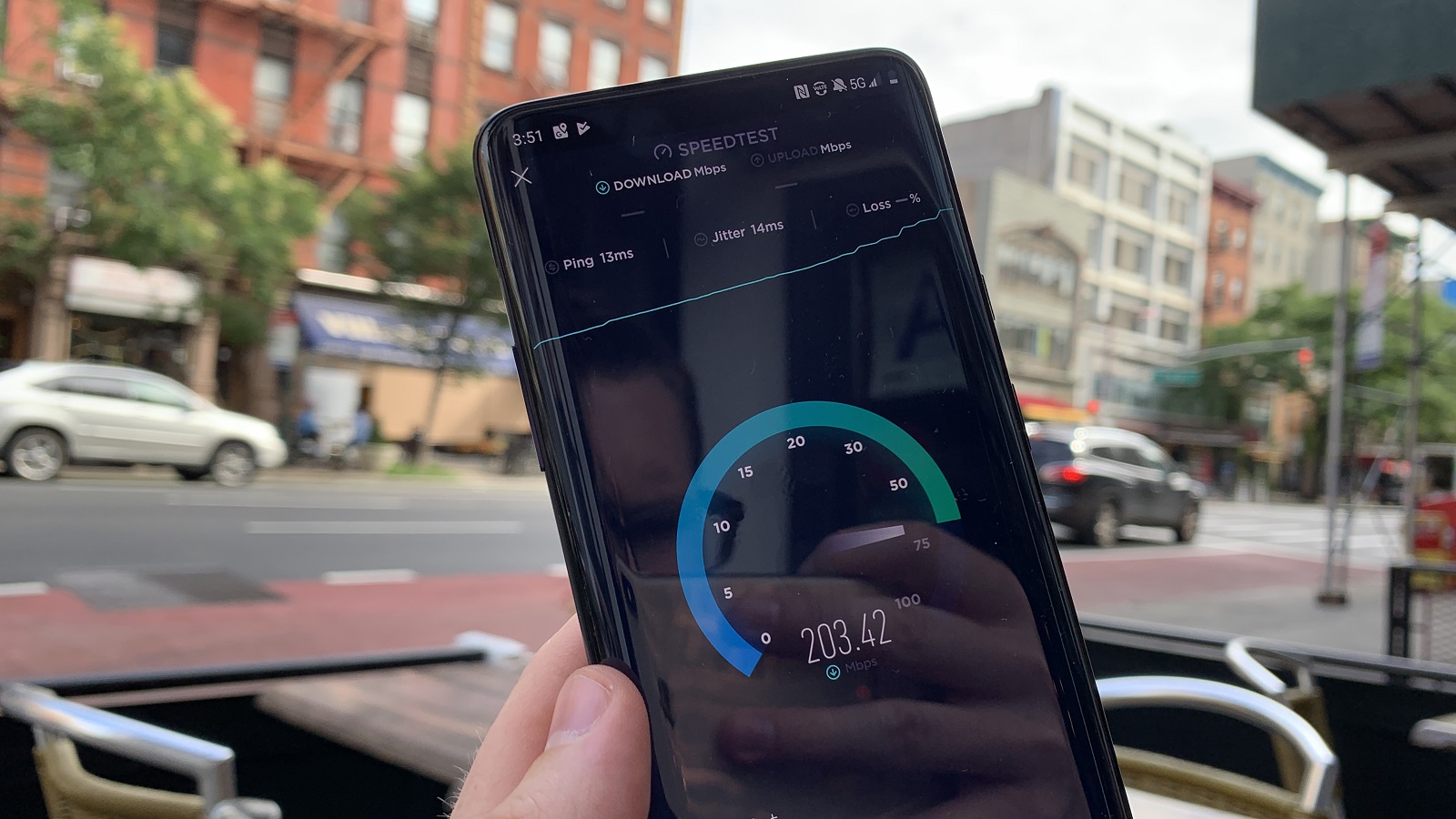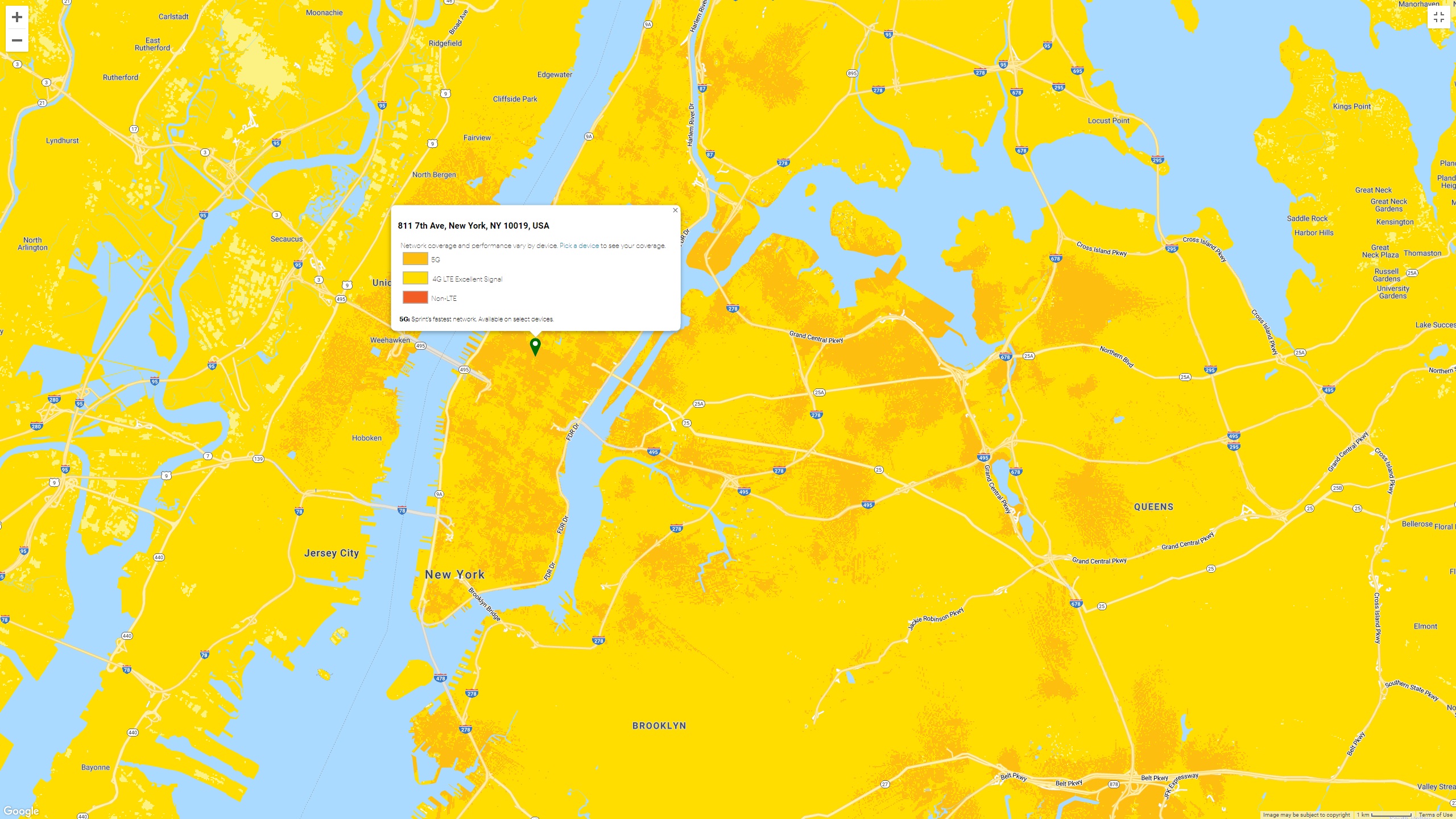OnePlus 7 Pro 5G in the wild: testing Sprint's NYC 5G network
New (to the US) phone, new network

Sprint confirmed in early August that it would be bringing a 5G-capable OnePlus phone that would work on the carrier’s network. As we predicted, that device is the OnePlus 7 Pro 5G, and we got to take it for a spin around New York City.
Sprint 5G in NYC works on the 2.5Ghz bandwidth which, promotional materials claim, gets around 400Mbps – not quite the 1Gbps achieved by millimeter wave, but much higher than 4G LTE speeds.
The service went live in NYC today as well as Washington DC, with Phoenix and Los Angeles networks going live tomorrow – but there’s a lot of attention on the Big Apple due to more challenging terrain: the city has three to four times the signal density of less populated urban areas in North America, a Sprint executive said at a media event launching the NYC network.
The city’s coverage area extends from Central Park down to the southern tip of Manhattan at launch, Sprint claimed and, in our quick tests, we found that to be mostly true: when roaming from Midtown near Bryant Park down to the East Village, we only flickered down to 4G/LTE a handful of times, and saw speeds subsequently dive down to 3-5Mbps.
We didn’t quite see the approximately 400Mbps Sprint claimed in its media presentation – not in the area they specifically suggested would get those speeds. Instead, we caught a median of 200Mbps, occasionally rising up 250Mbps and, rarely, up to 333Mbps.
That’s a far cry from the peak 1.4Gbps we saw with the Samsung Galaxy S10 5G when hooked up to Verizon 5G that we tested in Chicago, but Sprint’s network spans a far wider area than the handful of neighborhoods that Verizon’s millimeter wave setup covers.
More importantly, we didn’t have to do the “5G shuffle” hopping between nodes: when we tested Verizon’s Chicago network, its millimeter wave emitters projected in such a small radius that we had to keep them in line-of-sight to maintain such high speeds. Not so with the 2.5Ghz Sprint network, which reliably delivered the aforementioned 200Mbps median speeds across its coverage area.
Get daily insight, inspiration and deals in your inbox
Sign up for breaking news, reviews, opinion, top tech deals, and more.
We’ll have to do more extensive testing to see how widespread that area is. While T-Mobile 5G released clear-cut 5G coverage maps, you'll have to do a bit of clicking around Sprint's 4G LTE/5G coverage page to find which areas are covered by the carrier's 5G service.
Zoom down to the cities Sprint 5G has launched in, though, and you'll find darker orange areas aplenty that provide 5G service. The map backs up Sprint's assertion about NYC's signal density, given its wide but patchy spread.

Compare that to the coverage map's 5G layout in Dallas-Fort Worth and Phoenix, which have far less patchy coverage. Los Angeles' service is somewhere in between. Even so, by these maps alone, Sprint's sub-6 5G network seems to cover more ground than other carriers that rely on mmWave.

What’s all that speed for?
Practically speaking, we haven’t found essential uses for the highwater 1.4Gbps speeds we saw in Verizon’s network – we’ve mainly put it to work quickly downloading media as an armchair comparison metric.
Instead of downloading the entire first season of Netflix’s Stranger Things in just under 39 seconds, as we achieved in our Verizon 5G test with the Galaxy S10 5G in Chicago, the OnePlus 7 Pro 5G on Sprint 5G downloaded it in under 5 minutes.
In other words, you could queue up a short season of TV in the time it takes for the next subway train to arrive, or while waiting for a latte.
Sprint 5G today... and beyond
Sprint is launching its 5G network in NYC and Washington DC, and a day later, in Phoenix and Los Angeles. At the media event in New York City, executives claimed the company would cool its heels for a while and build out its service in its existing cities – now nine total – instead of announcing other areas it will launch its 5G network. For instance, it has spread availability in its Dallas-Fort Worth hub to the Richmond and Garland suburbs since launching there in April.
Which could be because the carrier waiting for its merger with T-Mobile to pass its final hurdles after getting major approval by the US government back in July. Assuming it goes through, the combined network could provide more robust 5G service in overlapping areas, like NYC.
As it stands, Sprint’s 5G network currently covers 2,100 square miles and covers 11 million people, according to the carrier. While we can’t get to all these cities to test them out, assuming they get the same speeds as we found in NYC, we should expect those with 5G phones (Sprint 5G phones include the OnePlus 7 Pro 5G, Samsung Galaxy S10 5G and LG V50 5G, along with the HTC 5G Hub) to enjoy speeds much better than they found with LTE.
David is now a mobile reporter at Cnet. Formerly Mobile Editor, US for TechRadar, he covered phones, tablets, and wearables. He still thinks the iPhone 4 is the best-looking smartphone ever made. He's most interested in technology, gaming and culture – and where they overlap and change our lives. His current beat explores how our on-the-go existence is affected by new gadgets, carrier coverage expansions, and corporate strategy shifts.
